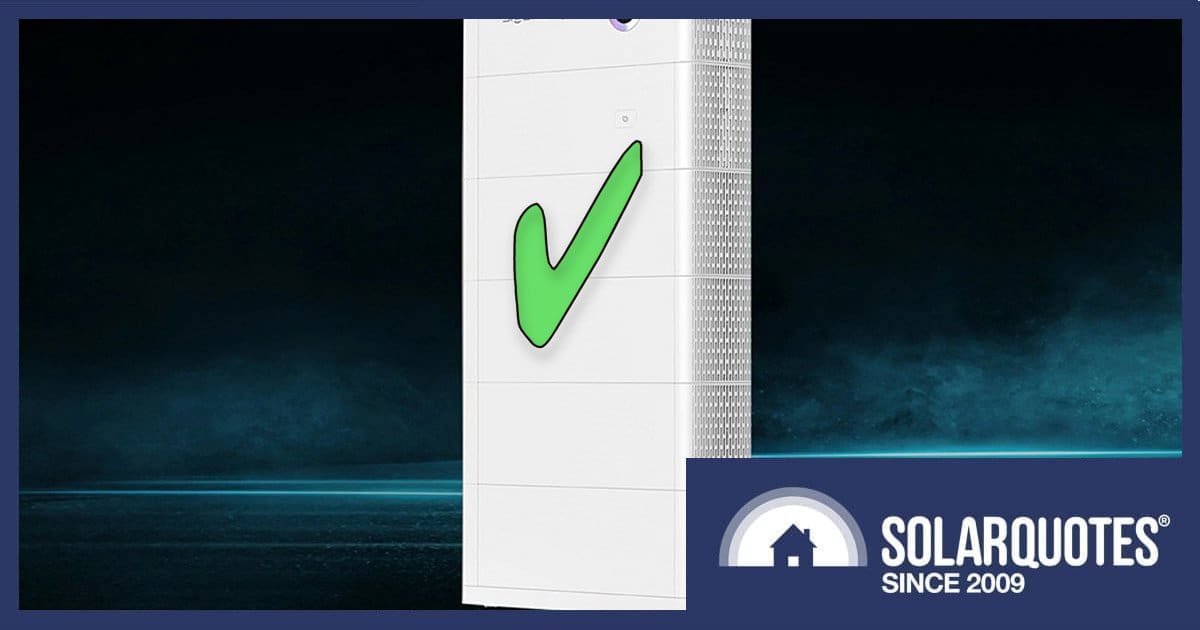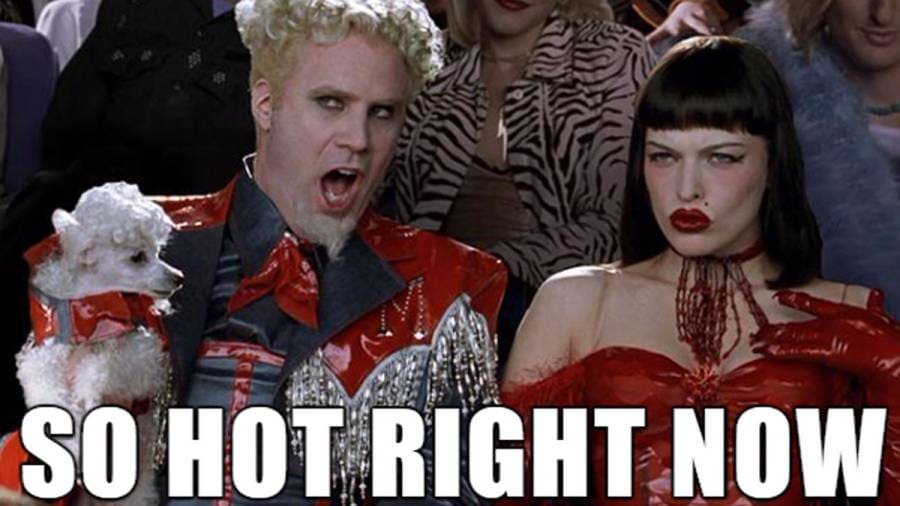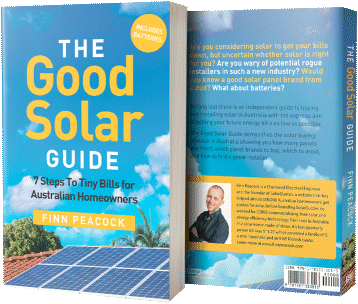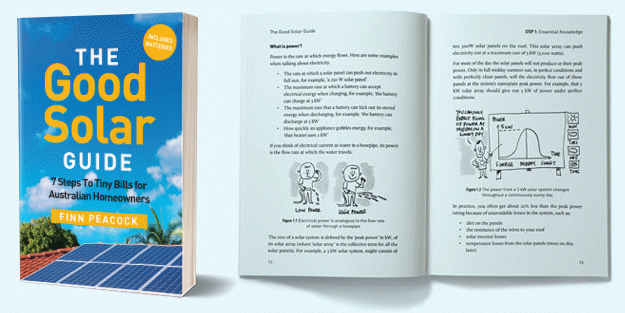
There was an eagerly-awaited addition to Synergy’s Supported Solutions List for Western Australia’s home battery rebate in the last few days. But some other notable players are still missing in action.
Who Made Synergy’s Supported Solutions List?
On Friday afternoon (August 22), various Sigenergy SigenStor battery systems, hybrid inverter and energy controller modules were finally added to Synergy’s list. This means the Sigenergy equipment noted is now eligible under Western Australia’s Residential Battery Scheme.
While Sigenergy is not the Messiah, the SigenStor is taking some of the limelight previously occupied by another popular brand led by an interesting CEO. Tesla is still conspicuously missing from the list.

The delay in Sigenergy’s listing was causing some angst in the industry, and among households keen to get a SigenStor installed.
Some Rebate Synergy, But Hurdles A-Plenti
The national solar battery rebate, currently worth around $330 per usable kilowatt-hour (kW) usable capacity, requires batteries be on the Clean Energy Council’s Approved Batteries List and the system to be Virtual Power Plant (VPP) *capable*.
But they are taking things a couple of steps further out west in the Cook Government’s WA Residential Battery Scheme, which like the national scheme also kicked off on July 11.
In the Synergy area, which includes Perth and WA’s south-west, hybrid inverters and ‘all-in-one’ battery systems with inbuilt inverters must also be on Synergy’s supported solutions list for state rebate eligibility2. In Synergy’s service area, the state rebate is worth $130 per kilowatt-hour of usable battery capacity up to 10 kWh — so, a maximum rebate of $1,300.
In other areas of the state, solutions also need to be on Horizon Power’s list. In Horizon’s service area3, the rebate is worth $380 per kilowatt-hour of usable battery capacity up to 10 kWh — a maximum rebate of $3,800. Sigenergy hasn’t popped up on that list at the time of writing.
Furthermore, the WA subsidy (which can be ‘stacked’ with the national rebate) rules require connection to a VPP.
Among other cogs in this complex machine is Plenti, a ‘Buy Now, Pay Later” (BNPL) provider. Plenti is the scheme’s administrator and financier; providing optional interest-free loans of up to $10,000 for home battery systems. The firm also plays a role in *who* can install battery systems. As well as installers requiring SAA (Solar Accreditation Australia) accreditation, participating solar businesses must also be approved by Plenti.
Other Manufacturers On Synergy’s ‘Approved’ List
Technology providers are required to offer solutions meeting Synergy’s DER Functionality Requirements and Utility Interconnection Handbook, and verified as such.
Sigenergy was the only new addition on August 22 to the Synergy list, which had previously last been updated on August 8. Selected battery systems and inverter equipment from the following brands is currently supported.
- Fronius
- GoodWe
- Growatt
- Sungrow
- Anker Solix
- Alpha ESS
- Solax
- Sanjing
- iStore
- Sofar Solar
- Hinen
- Sigenenergy
But at this point, Fronius is the only vendor noted by Synergy as officially deemed ready to be activated under a VPP program; although every manufacturer on the list is progressing towards this. The other listings are provisional, which allows devices to be state rebate eligible even before full VPP readiness is achieved.
Manufacturer Applications Still Pending
As at June 30 2025, there were quite a few other manufacturers with applications pending for Synergy’s supported solutions list that aren’t yet appearing on it. Among them:
- SAJ
- eCactus
- SolarEdge
- HYXI
- Solis
- Enphase
- FoxESS
- ESY Sunhome
- Deye New Energy
- Redback
- Tesla
… and perhaps more have been added since.
WA’s battery incentive got off to a *very* slow start. At the time of an Industry Forum held in late June, 26 technology provider applications had been received. Of those, 14 were not yet in a testing environment and 9 were; leaving just 3 having completed minimal integration testing. Zero were ready for provisional prime-time at that point.
How To Choose A Great Home Battery System
Whether you’re in Western Australia or another part of the country, if you’re trying to sort out what energy storage solution (and installer) may be best for your household, check out SolarQuotes’ home battery guide and solar reviews center. And you can stay up to date with all things solar by subscribing to SolarQuotes’ free weekly newsletter.
Footnotes
- But unlike the national scheme, batteries couldn’t be in place (but not switched on/signed off) in the couple of months leading up to July 1. ↩
- In cases where systems are made up of a hybrid/battery inverter and separate battery modules (which may come from different manufacturers), the separate battery modules do not need to be on the Supported Solutions List but must be on the CEC approved battery list. ↩
- You can read more about installing solar and batteries in regional WA here. ↩

 RSS - Posts
RSS - Posts



I wonder how many battery installs in WA since July 1 claimed the federal rebate compared to the number that claimed the state rebate. That would be an interesting comparison.
Do you mean an “exclusive OR”, or, an “inclusive OR”?
Two options are possible, with your comparison.
Option 1 (exclusive OR) – the number who got A, but not B, compared to the number who got B, but not A.
Option 2 (inclusive OR) – the number who got A, compared to the number who got B, regardless of whether they got both A and B.
If I can get what I seek (if and when it becomes available), I am inclined to go for the feral rebate, and, avoid the WA state scam.
The former, is financial assistance to achieve the objective; the latter, is a poke in the eye with a sharp stick.
And, of course, a third comparison option exists, with three variables; the number who got A and not B, compared to the number who got B and not A, compared to the number who got both A and B…
Earlier Synergy had a list of who had applied and how far through they were testing and acceptance. This list has since disappeared.
With the lift of the 5kw Inverter limit, it makes more sense for me to upgrade existing and add batteries while forgoing the State Rebate, which also conveniently means I don’t need to join a VPP. The increase in inverter limit means I can backup more of my property and prepare for the future further electrification of the property (gas HWS and cooktop to be converted in coming years).
I wanted to get the WA rebate by adding an iStore battery to my Huawei system. Note that iStore took over and relabelled Huawei’s products, so they are identical.
But Huawei is not on the approved inverter list – and probably never will be, since who in the industry is going to go through all the paperwork for a brand no longer sold in Australia?
So I – among others – will be getting only the federal rebate.
Complaint to the Energy and Water Ombudsman WA
Subject: Complaint regarding Synergy’s unfair contractual terms and lack of transparency
Introduction
I am lodging a complaint against Synergy regarding unfair and hidden clauses in their VPP Products Terms and Conditions contract. My concern is that Synergy has buried significant provisions deep in the terms and conditions that survive well beyond the two-year contract period. Consumers sign up believing they have an ability to leave the contract in 2 years, but in reality, Synergy retains indefinite control over their solar and battery systems.
The most concerning clause grants Synergy the right to “manage active power generation.” This effectively hands the retailer control over the core function of a consumer’s inverter and battery system for the life of the equipment, with no guardrails or external oversight.
Water of time complaining to the EWOWA.
The objective of the office, is to protect whatever acts of fraud and malfeasance are committed by the utility companies.
Crooks protecting crooks – a protection racket.
And, remember that the head of the department was paid half a million AUD a year, by the state ALP government, to stay away from work.
“Water of time” should have been “Waste of time”.
I believe this conduct breaches the fairness principles in the Australian Consumer Law (ACL), which applies in Western Australia through the Fair Trading Act 2010 (WA). The ACL prohibits terms that create a significant imbalance, are not transparent, and cause detriment if enforced. Synergy’s survival clauses appear to meet all three tests.
Key Issues
1. Hidden clauses
In section 3.3 of the contract, Synergy states that certain conditions “…survive following the VPP End Date and the customer agrees that Synergy may continue to exercise Synergy Rights following the VPP End Date…(for the life of the system)”. These include:
3.1(a): Ongoing right to remotely connect to the system.
3.1(b)(4): Right to manage active power generation.
3.1(b)(5): Right to manage export limits.
3.1(e): Right to collect and use monitoring data, system settings, and status updates.
3.1(f): Right to use advanced software and internet connectivity to exercise these powers.
These rights are not highlighted or explained to customers upfront. They are buried deep within a highly legalistic contract, and no plain-English explanation is offered. A reasonable consumer would expect all significant obligations to end with the two-year contract, unless they are prominently disclosed.
The ACCC has consistently warned that burying significant terms in fine print can amount to misleading or deceptive conduct under section 18 of the ACL.
2. Overreach: “Manage Active Power Generation”
The broadest and most problematic clause is the right to “manage active power generation.”
Scope: This clause enables Synergy to curtail solar production or restrict battery discharge into the home.
No framework: There are no published limits, policies, or standards that explain when or how this power would be exercised.
Duration: The clause applies for the life of the system, not the two-year contract, creating a long-term burden far beyond what consumers expect.
Full complaint here –
https://forums.whirlpool.net.au/thread/3kw4nv83?p=464#r9265
Synergy finally allowed the Solaredge equipment but it requires an additional gateway, which I am personally not interested in adding.
Instead, I am going to forgo the state rebate and just go with the Federal rebate with my upgrade. For $1300 I really don’t want to have to buy another box (extra cost) and then sign up to a VPP.